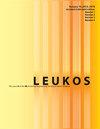Optical Lock-in Spectrometry Reveals Useful Spectral Features of Temporal Light Modulation in Several Light Source Technologies
IF 2.6
2区 工程技术
Q2 CONSTRUCTION & BUILDING TECHNOLOGY
引用次数: 2
Abstract
ABSTRACT This paper presents a study of the spectral characteristics of temporal light modulation in several technologies of lighting products. An optical lock-in spectrometer was designed for this purpose and integrated in a spectral radiant flux measurement facility. It was applied to incandescent and fluorescent lamps, as well as lamps based on white phosphor-converted LEDs and tunable RGB LEDs. The results are well correlated with the light emission processes of each technology. For incandescent lamps, the spectral modulation follows a 1/λ relationship in agreement with the blackbody radiation laws. Measurements performed on halophosphate and tri-phosphor tubes agree well with published data. The modulation and phase spectra of fluorescent lamps reveal a variable modulation rate across the visible range, directly related to the fluorescence lifetimes of the different luminophores, which were estimated from our data using a model of single exponential decay.The spectral modulation of white phosphor-converted LED lamps is nearly constant across the visible spectrum, demonstrating that their color parameters can be assessed from the lock-in modulation amplitude spectrum. In the case of tunable RGB LED lamps using PWM, the spectral modulation widely differs from the steady-state spectral distribution and changes with the user settings, confirming the possible occurrence of temporal color artifacts. Optical lock-in spectrometry can be used to improve spectral and color measurements of solid-state lighting, opening new opportunities for laboratory and remote sensing applications. Other foreseeable applications of optical lock-in spectrometry are also presented.光学锁定光谱揭示了几种光源技术中时间光调制的有用光谱特征
摘要本文研究了几种照明产品技术中时间光调制的光谱特性。为此设计了光学锁定光谱仪,并将其集成到光谱辐射通量测量设备中。它被应用于白炽灯和荧光灯,以及基于白磷转换led和可调RGB led的灯。结果与各技术的发光过程有很好的相关性。对于白炽灯,光谱调制遵循与黑体辐射定律一致的1/λ关系。在卤磷管和三磷管上进行的测量与已发表的数据一致。荧光灯的调制和相位光谱揭示了在可见光范围内可变的调制率,这与不同发光团的荧光寿命直接相关,这是根据我们使用单指数衰减模型的数据估计的。白磷转换LED灯的光谱调制在整个可见光谱中几乎是恒定的,这表明它们的颜色参数可以从锁定调制幅度光谱中评估。在使用PWM的可调RGB LED灯的情况下,光谱调制与稳态光谱分布有很大差异,并随着用户设置而变化,这证实了可能发生的时间色伪影。光学锁定光谱法可用于改善固态照明的光谱和颜色测量,为实验室和遥感应用开辟了新的机会。还介绍了光学锁定光谱法的其他可预见的应用。
本文章由计算机程序翻译,如有差异,请以英文原文为准。
求助全文
约1分钟内获得全文
求助全文
来源期刊

Leukos
工程技术-光学
CiteScore
7.60
自引率
5.60%
发文量
19
审稿时长
>12 weeks
期刊介绍:
The Illuminating Engineering Society of North America and our publisher Taylor & Francis make every effort to ensure the accuracy of all the information (the "Content") contained in our publications. However, The Illuminating Engineering Society of North America and our publisher Taylor & Francis, our agents, and our licensors make no representations or warranties whatsoever as to the accuracy, completeness, or suitability for any purpose of the Content. Any opinions and views expressed in this publication are the opinions and views of the authors, and are not the views of or endorsed by The Illuminating Engineering Society of North America and our publisher Taylor & Francis. The accuracy of the Content should not be relied upon and should be independently verified with primary sources of information. The Illuminating Engineering Society of North America and our publisher Taylor & Francis shall not be liable for any losses, actions, claims, proceedings, demands, costs, expenses, damages, and other liabilities whatsoever or howsoever caused arising directly or indirectly in connection with, in relation to, or arising out of the use of the Content. Terms & Conditions of access and use can be found at http://www.tandfonline.com/page/terms-and-conditions .
 求助内容:
求助内容: 应助结果提醒方式:
应助结果提醒方式:


